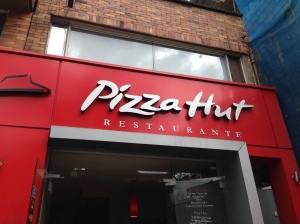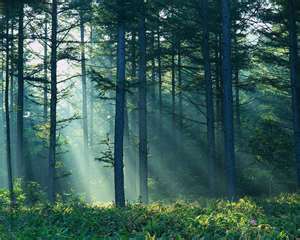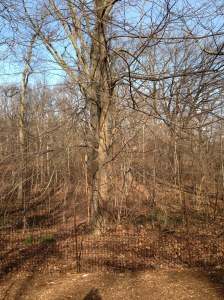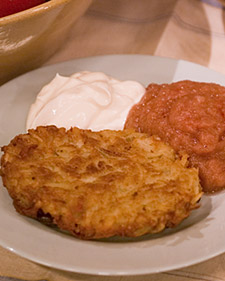Before I take off for Cartagena tomorrow, I want to tell you about a special – and unexpected treat: Shabbat dinner – in the Zohar hostel with the hostel’ hosts and E., an Orthodox Cali Jew/ fellow traveler. Where to even begin….

E., B., J., from left to right. I have no other pictures from the dinner because once the sun went down, there would be no pics.
The Zohar’s J. and B. are captivated by Kabbalah, and by extension, Judaism. E. has been satisfying their curiosity, providing equal opportunities to teach and learn. I was invited to Shabbat/Friday night dinner thanks to my DNA. At 5:30 we gathered in the hosts’ home on the 2nd floor and E. prayed the afternoon service. Needless to say, not part of my ritual.
What I’m about to say may sound familiar if you’ve read earlier posts about my Eastern European conversations: As Jews here reclaim their Judaism (Benei Anussim, Orthodox communities are springing up all over the country – 21 at current count – all Orthodox, because as E. shared, if you don’t know anything you should learn it all the ‘right’ way and then you have the knowledge to make the decision to do otherwise – choose your own brand of Judaism (and in my case “Jewish Renewal” thanks to Romemu in NYC). Based on J.’s and B.’s strong affinity, E. threw out the possibility they had Jewish DNA – something that was drawing them back in so to speak.

Inside the church at Monseratte, one of Bogotá’s prize destination, atop an eastern hill overlooking the city. I’ll have pics of synagogues as I attend. As you can imagine the churches here are plentiful, with crowds attending afternoon services in those I’ve popped into.

Gondola that took us down the hill from Monsarrat – my scariest action so far – I was with a Peace Corps volunteer, W. from Paraguay and she agreed! This pic courtesy of rawinquiry.com
The Hebrew (with a Sephardic accent) and Spanish prayers were diligently listened to by J. and B. – from Kabbalah, they were focused on the pronunciation of each letter, and open to its spirituality. It’s one more example of how intent guides the value of any experience. I’m respectful – and in awe of those learning a new religion – having the strength and self-awareness to know something is ‘missing’ from their life – not to mention learning how to read Hebrew and pray. E. didn’t learn till he was 28 – (and he knew he was Jewish: his mother is Sephardic, his grandfather Ashkenazi/German from the EEuropean immigration of the ’20’s).
During a lovely dinner of soup (with lots of potatoes Colombian style), salad, chicken and ox tail (yup!), B. asked non-stop questions – in Spanish with spectacular non-verbals! My brain bloated way before my stomach, though most of her questions (I think…) dealt with both the history of Judaism and also specific Halacha (rules). E. clearly outlined the difference in men’s and women’s roles in Orthodox Judaism – separation of the sexes, men leading prayer in volume and intensity – while I explained how my service is filled with singing and dancing – and mixed seating. I imagine over the next few months I’ll find myself in many different synagogue groups, equally awed, equally amazed, and feeling wonderfully blessed (and even frustrated).

Overlooking Bogotá – as you can see a HUGE city. The skies are overcast and actually quite polluted thanks to diesel fuel
E. and I were in total agreement that there is no-one way to be Jewish. As he said – it’s not a race, nationality, or even just a religion – it’s a way of thinking. And freedom of thought, as Jews reclaim their identity here is the greatest gift. Though he was quite insistent on the importance of following the ‘rules’ (Halacha) which is not my way of practicing. This insistent determination is something I’ll be paying attention to over the next few months.
One thing is for certain – I listen for similarities from my E.European conversations and that has to stop. I’m in a different culture with a different history. I know so little – I have so much to learn.

The eastern hills are lush and beckoning. Notice the cross planted as a reminder – a mecca to all who look up. By late afternoon the sky clears to reveal brilliant blue sky and welcome warmth!


















































